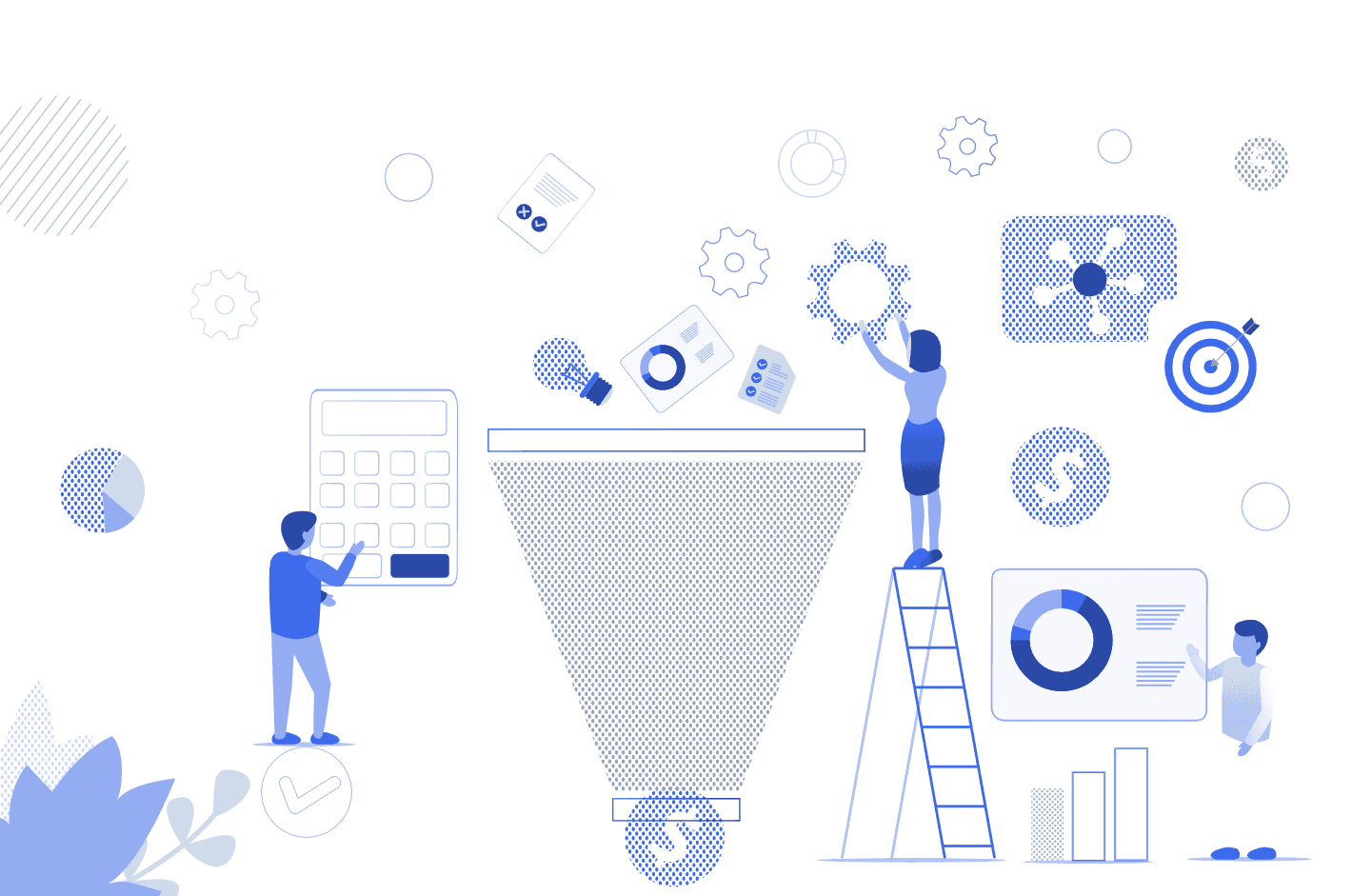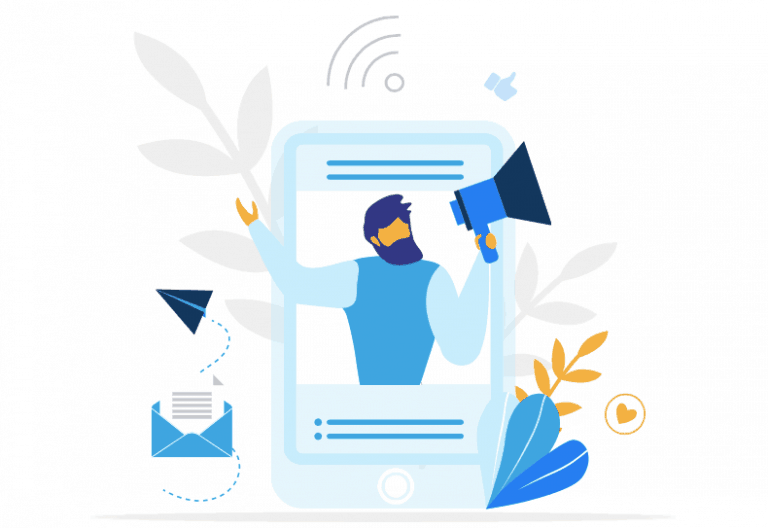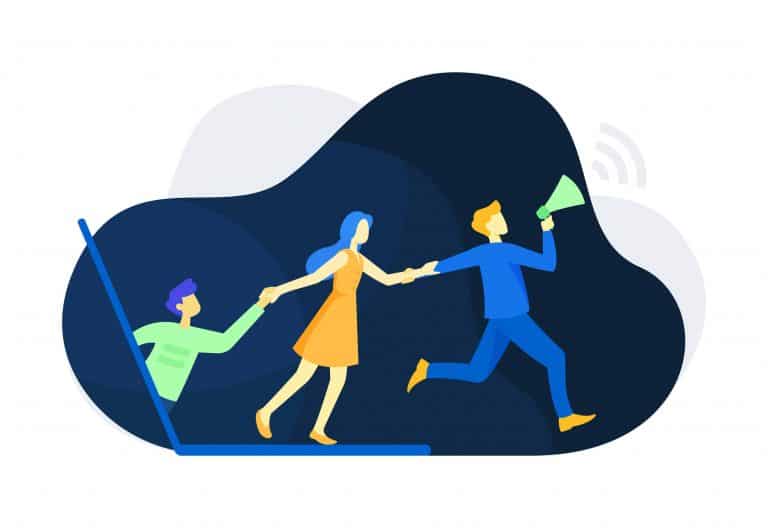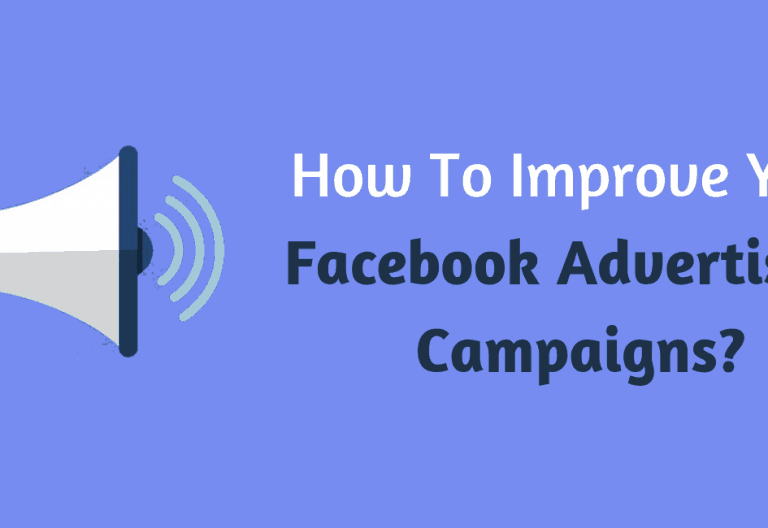A marketing funnel is a must-have when it comes to running any business. A complex process of converting a browser into a paying customer, or even into a loyal and returning customer, can be visualized for a better understanding of consumer’s needs. As a goal of marketing is to promote and eventually sell your products or services, these two fields are strongly connected. They should have coherent strategies to cover every stage of your company’s sales funnel.
What is a marketing funnel?
The marketing funnel can be defined as a system that helps you track the stages of decision-making a customer goes through when making a purchase.
How’s a marketing funnel different from a sales funnel? These terms are used interchangeably. Nevertheless, there’s a fine line between them. The marketing department’s goal is to entice customers, and the sales team is working hard to close the deal. Therefore, the bottom of the marketing funnel can be the top of the sales funnel. That way, you can create a fully coherent strategy. However, sometimes it’s challenging to distinguish a marketing strategy that helps sales process, from marketing techniques. As we entered the digital era and new media enable reaching customers in many ways, not always in linear order, so that these two types of funnels can blurry into one. While creating your first funnel, focus on the holistic customer journey, and use one marketing/sales funnel.
How to build a marketing funnel in 5 steps
Marketing funnels can differ depending on the business specifics, an industry, products or services, and should be tailored to your customers’ preferences. Below, we’ll present the buying decision process introduced by John Dewey in 1910. Even though it’s been more than 100 years since this idea was proposed, it’s still actual and can be useful even for modern companies.
1# Problem/Need Recognition
Your products or services should be solutions to your potential customers’ problems. The top of the funnel (TOFU) is when consumers realize what do they need. That’s the moment when they identify what kind of product is required to solve the problem. Buyer’s needs differ across different industries so that you need to adjust this stage precisely to your target group. Such recognition of a problem can occur in different situations, time of the year, etc. Consider your business specifics while thinking about this stage of your marketing funnel.
Marketing tip: By creating valuable content and educating customers, brands can help them realize what products they might need to boost their performance.
2# Information Search
The second stage is looking for a solution. That’s when customers begin their active journeys across the internet while searching for the best possible products or services. Among the most common ways of searching is the usage of the search engines. That’s why it’s essential to optimize a website. Off-site and on-site SEO activities will help you rank your website higher and get customer’s attention while browsing. Social media has also become a valuable source of information when it comes to choosing the right solution. Customers willingly learn about opinions and recommendations about the companies via social media profiles/pages, as well as ask their friends openly for the best choices.
Marketing tip: Use internet monitoring to get notifications not only when someone mentions your brand or products, but also for keywords regarding your industry and type of products that you’re offering. That way, you can respond to the questions with a helpful piece of content from your blog, and therefore, attract the user to visit your website.
3# Evaluation of Alternatives
Thanks to the easy access to information, consumers usually are comparing many options before purchasing. Yet again, that differs depending on the type of products. When it comes to cheaper products, customers will probably spend more time on the evaluation to find cost-effective solutions with all of the needed features. On the other hand, some purchases might be impulsive, such as clothes. At this stage, a comprehensive comparison of options can attract your customers to your blog. Don’t push your products, try to be objective, and point the benefits of given solutions. Focus on reaching your target group and explaining why your products can be right for them.
Marketing tip: It’s crucial for brands to find their unique value propositions and craft marketing messages based on these statements. That way, you communicate with customers using values that matter for them, not specifics and technical details they don’t understand. Highlight special features that enable your customers to achieve their goals faster and better than using your competitors’ products.
4# Purchase Decision
Based on the previously conducted research, a customer’s making a purchasing decision. It’s the time for the last chack-up of the product’s specifics and asking questions in case of having doubts. In this stage, you need to assure customers they’re about to make the right decision.
Marketing tip: Detailed product page with authentic testimonials and helpful customer support is crucial. To close the deal, sometimes your customer-facing team needs to answer some final questions about the product. To deliver the best and fastest support, you can implement a chatbot on your website to handle the most common queries, so that your agents can focus on the more complex issues.
5# Post Purchase Behavior
The marketing funnel doesn’t end on the purchasing. There’s a lot more you can do to improve customer experience and, as a result, turn your new customers into returning customers or even brand ambassadors. If you’re selling an online tool, you can provide comprehensive onboarding to help your clients use your solution effectively. If you run an e-commerce business, you should keep in touch with customers, update them on the delivery time, and gather feedback. Delight buyers, build long-term relationships, and gain loyal customers.
Marketing tip: Don’t forget about your existing customers. Create valuable content also for ones that are already using your products. It’s an excellent opportunity for cross- and up-selling.
Key takeaways on the marketing funnel
Once you know what the stages of your marketing funnel are, you can adjust your strategy to boost your performance. Your marketing activities should be coherent with the stages of the sales funnel so that you can interact with existing and potential customers at the right time and in the right circumstances.
While promoting your products or services, use RocketLink to reach customers who clicked your links in the past. By adding retargeting pixels, you can track users who click URLs, and therefore, are potentially interested in your content or products. That way, you can remind viewers about your brand, present them with your new educational content and attract them to learn more about your offer. Your social media and Google Ads campaigns can be more resultful than ever before!
marketing funnelmarketing tipssales funnel


